 W
WThe American Bison Society (ABS) was founded in 1905 by pioneering conservationists and sportsmen including Ernest Harold Baynes, William T. Hornaday and Theodore Roosevelt to help save the bison from extinction and raise public awareness about the species.
 W
WThe Angkor Centre for Conservation of Biodiversity (ACCB) is a non-governmental organization in Cambodia. ACCB is "one of the first nature conservation and endangered wildlife rescue and breeding centre" in the country. It works towards the conservation of wildlife and biodiversity in Cambodia. Established in 2003 by the German organizations of Allwetterzoo Münster and the Zoological Society for the Conservation of Species and Populations, ACCB's goals include the rehabilitation of confiscated wildlife, breeding of selected species, environmental education, local community involvement, research, and in-situ conservation. Dr. Stephan Goetz from Munich has provided major financial support via Stiftung Artenschutz, a consortium of zoos and nature conservation organizations. The ACCB is a project of the World Association of Zoos and Aquariums.
 W
WThe Association to Safeguard Giraffes in Niger is an organization formed to help the giraffes of Niger, including ensuring the preservation of their habitat in the face of devastating agricultural expansion.
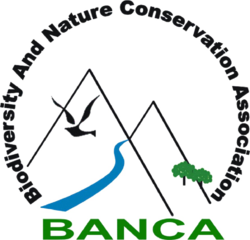 W
WBiodiversity and Nature Conservation Association (BANCA) is a Burmese non-governmental organisation established in the capital city Yangon. The society aims to conserve natural diversity and promote awareness. It remains the leading force in Burma for biodiversity conservation and sustainable development.
 W
WThe Caribbean Manatee Conservation Center is a research, education, rescue, and rehabilitation partnership established in 2009 in the Caribbean island of Puerto Rico in order to help endangered manatees survive from extinction.
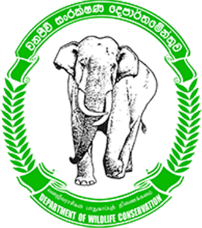 W
WThe Department of Wildlife Conservation is a non-ministerial government department in Sri Lanka. It is the government department responsible for maintaining national parks, nature reserves and wildlife in wilderness areas in Sri Lanka. Forest reserves and wilderness areas are maintained by the Department of Forest Conservation. The head of the Department is the Director General of Wildlife Conservation, formally known as Warden. It was established in October 1949 with Captain Cyril Nicholas, MC as its first Warden.
 W
WDurrell Wildlife Conservation Trust is a conservation organization with a mission to save species from extinction.
 W
WThe Endangered Wildlife Trust is a South African environmental organisation for the conservation of threatened species and ecosystems in southern Africa.
 W
WThe European Wildlife is a Pan-European non-profit organization. Its main goal is nature conservation. The European Wildlife key objective is to conserve biological diversity and to reduce the impact of climate changes on nature and humankind. The main objective of European Wildlife is creating of non-state reserves and bio-corridors which would connect places with the most valuable biodiversity in Europe.
 W
WFauna & Flora International (FFI) is an international conservation charity and non-governmental organization dedicated to protecting the planet's threatened wildlife and habitats. Founded in 1903, it is the world's oldest international conservation organisation. The logo of the society is the Arabian oryx, after the very successful Operation Oryx, a flagship Arabian oryx captive breeding project undertaken by the society.
 W
WThe Florida Fish and Wildlife Conservation Commission (FWC) is a Florida government agency founded in 1999 and headquartered in Tallahassee. It manages and regulates the state's fish and wildlife resources, and enforces related laws. Officers are managers, researchers, and support personnel, and perform law enforcement in the course of their duties.
 W
WHaiti National Trust is an international, non-governmental, and non-profit environmental organization dedicated to protecting the biodiversity of Haiti. The Haiti National Trust seeks to establish more protected areas, including national parks, and to stop the destruction of forests, which is the primary cause of species loss in Haiti. The trust also advocates protection of the country’s fragile coral reefs and coastal ecosystems. It was founded in 2015 by Philippe Bayard, president and founding member of the Audubon Society of Haiti, and S. Blair Hedges, Laura H. Carnell Professor and director of the Center for Biodiversity at Temple University.
 W
WThe International Council for Game and Wildlife Conservation (CIC) is a politically independent not-for-profit international organisation, aiming to preserve wildlife through the promotion of sustainable use of wildlife resources. The acronym CIC comes from the organisation’s original French name Conseil International de la Chasse.
 W
WThe Junta Nacional de Homologación de Trofeos de Caza is the governing body for the control and assessment of trophy hunting in Spain, a branch of the Ministry of Agriculture. It was founded in 1950 and first presided by Eduardo de Figueroa, 8th Count of Yebes. Since 1999, the President is Alonso Álvarez de Toledo, 12th Marquess of Valdueza, who has also served as vice-president of the International Council for Game and Wildlife Conservation and is the head of the Spanish delegation.
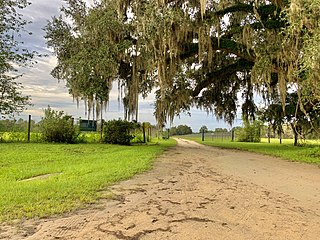 W
WLubee Bat Conservancy is an Association of Zoos and Aquariums-certified institution in Gainesville, Florida. Its focus is the research and conservation of bats, particularly megabats.
 W
WThe National Wildlife Federation (NWF) is the United States' largest private, nonprofit conservation education and advocacy organization, with over six million members and supporters, and 51 state and territorial affiliated organizations.
 W
WThe Wildlife Conservation Society (WCS) is a non-governmental organization headquartered at the Bronx Zoo in New York City, that aims to conserve the world's largest wild places in 14 priority regions. Founded in 1895 as the New York Zoological Society (NYZS), the organization is led by President and CEO Cristián Samper. WCS manages four New York City wildlife parks in addition to the Bronx Zoo: the Central Park Zoo, New York Aquarium, Prospect Park Zoo and Queens Zoo. Together these parks receive 4 million visitors per year. All of the New York City facilities are accredited by the Association of Zoos and Aquariums (AZA).
 W
WThe Okapi Conservation Project (OCP) was founded in 1987 for the protection of the okapis and their habitat. Okapis are found only in the Democratic Republic of Congo and are seen as the major flagship species of the Ituri Forest. The OCP has about one hundred staff members and one hundred and ten government rangers under the direction of the Institute in Congo for the Conservation of Nature. The Okapi Conservation Project is partnered with the Wildlife Conservation Network. OCP's founder John Lukas is also a founding member of the Wildlife Conservation Network. In 1992 the project helped create the Okapi Wildlife Reserve, encompassing 13,700 square kilometers of the Ituri Forest, which was designated as a United Nations World Heritage Site in 1996.
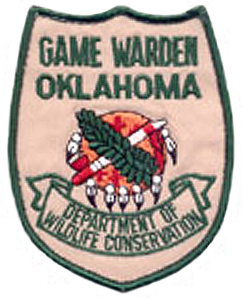 W
WThe Oklahoma Department of Wildlife Conservation is an agency of the state of Oklahoma responsible for managing and protecting Oklahoma's wildlife population and their habitats. The Department is under the control of the Wildlife Conservation Commission, an 8-member board appointed by the Governor of Oklahoma with the approval of the Oklahoma Senate. All members serve eight-year terms. The Commission, in turn, appoints a Director to serve as the chief administrative officer of the Department.
ProSpecieRara, the "Schweizerische Stiftung für die kulturhistorische und genetische Vielfalt von Pflanzen und Tieren", is a non-profit charitable organization dedicated to the preservation of the genetic diversity of plants and animals in Switzerland. It was founded in 1982 in St. Gallen and is headquartered in Basel.
 W
WThe Rare Species Conservation Centre (RSCC) was a conservation centre and zoological gardens situated just outside Sandwich in Kent, England, operated by The Rare Species Conservation Trust, a UK registered charity. Its purpose was to educate visitors and create awareness of the plight of some of the world’s lesser-known rare and endangered species of animal. It was home to rare and unusual animals. It closed due to lack of funds on 31 August 2015.
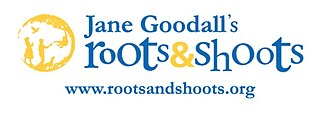 W
WRoots & Shoots was founded by Jane Goodall, DBE in 1991, with the goal of bringing together youth from preschool to university age to work on environmental, conservation and humanitarian issues. The organization has local chapters in over 140 countries with over 8000 local groups worldwide that involve nearly 150,000 youth. Many of the chapters operate through schools and other organizations. Participants are encouraged to identify and work on problems in their own communities affecting people, animals, or the environment. Charity Navigator, has awarded Roots & Shoots and its parent non-profit organization, the Jane Goodall Institute, its highest four star rating for accountability and transparency with 78.1% of its expenses going directly to programs.
 W
WThe Saiga Conservation Alliance SCA is a network of researchers and conservationists working to study and protect the critically endangered Saiga Antelope and their habitat. The Saiga are often seen a major flagship species of the Central Asian and pre-Caspian steppes. In the last ten years, saiga populations have declined by 96%, which is the fastest decline ever recorded for a mammal species. Saiga Conservation Alliance is partnered with the Wildlife Conservation Network
 W
WThe Saola Working Group SWG is a working group of the IUCN Species Survival Commission's Asian Wild Cattle Specialist Group, created in 2006 to protect the saolas and their habitat. The Conservancy works to engage and incorporate local communities in protecting saolas in Annamite Range mountains on the border of Laos and Vietnam. The Saola is one of the most endangered species in the world. Discovered in 1992 it was the first large mammal new to science in more than 50 years and has never been seen by a biologist in the wild. The Saola Working Group is a coalition that includes about 40 experts from the forestry departments of Laos and Vietnam, Vietnam's Institute of Ecology and Biological Resources, Vinh University, biologists and conservationists from Wildlife Conservation Society and the World Wildlife Fund.
 W
WThe Spectacled Bear Conservation Society - Peru (SBC) is a team of researchers and conservationists working to study and protect the endangered spectacled bear, also known as the Andean bear. Spectacled bears are the only surviving species of bear native to South America, and the only surviving member of the subfamily Tremarctinae, the short-faced bears. Their range is the Andean Mountains from Venezuela to Chile.
 W
W50°25′44″N 3°35′4″W
 W
WWildlife Alliance is an international non-profit wildlife and forest conservation organization with current programs and partnerships in Cambodia. It is headquartered in New York City, with offices in Phnom Penh. The logo of the organization is the Asian elephant, an emblematic species of Southeast Asia and the namesake for the organization's programs in the Southwest Elephant Corridor of the Cardamom Mountains of Cambodia. Suwanna Gauntlett is the Founder and CEO of Wildlife Alliance and one of the original founders of WildAid. The organization is governed by a Board of Directors, and a International Advisory Board provides guidance on strategy, fundraising, and outreach.
 W
WThe Wildlife Conservation Society (WCS) is a non-governmental organization headquartered at the Bronx Zoo in New York City, that aims to conserve the world's largest wild places in 14 priority regions. Founded in 1895 as the New York Zoological Society (NYZS), the organization is led by President and CEO Cristián Samper. WCS manages four New York City wildlife parks in addition to the Bronx Zoo: the Central Park Zoo, New York Aquarium, Prospect Park Zoo and Queens Zoo. Together these parks receive 4 million visitors per year. All of the New York City facilities are accredited by the Association of Zoos and Aquariums (AZA).
 W
WThe Wildlife Conservation Society of Tanzania (WCST) is an independent, membership and non-profit making organization founded in 1988 in Tanzania. Its main objective is to assist the government in conserving flora, fauna and the environment within Tanzania.
 W
WWildlife Friends Foundation Thailand (WFFT) is a registered foundation (non-profit) NGO in Thailand, founded in 2001 by Edwin Wiek. The foundation has several different projects including animal rescue, rehabilitation and veterinary assistance to wild animals in Thailand. It also is active in promoting the protection of wildlife, their natural habitat and the natural_environment. This is done through educational initiatives for local Thai people as well as tourists. WFFT operate a rescue center and wildlife refuge, including an Elephant refuge. WFFT responds to reports by the public and government officials of wildlife in need of care. Many of these rescued wild animals are kept as pets illegally, or are found injured. WFFT is known for their public stand against the so-called Tiger Temple and its ongoing violations of laws regarding keeping protected wildlife.
 W
WThe Wildlife Institute of India (WII), an autonomous institution under the Ministry of Environment Forest and Climate change, Government of India, was established in 1982. WII carries out wildlife research in areas of study like Biodiversity, Endangered Species, Wildlife Policy, Wildlife Management, Wildlife Forensics, Spatial Modeling, Ecodevelopment, Ecotoxicology, Habitat Ecology and Climate Change. WII has a research facility which includes Forensics, Remote Sensing and GIS, Laboratory, Herbarium, and an Electronic Library. The founder director was V. B. Saharia while the first Director was Hemendra Singh Panwar who remained the director from 1985 to 1994. Trained personnel from WII have contributed in studying and protecting wildlife in India. The national tiger census or the All India Tiger Estimation, is done by WII along with NTCA and state forest departments.
 W
WThe Wildlife Justice Commission (WJC) is an international foundation set up in 2015 , and with headquarters in The Hague, the Netherlands. The organisation operates globally with the mission to disrupt and help dismantle organised transnational criminal networks trading in wildlife, timber and fish. The WJC collects evidence with the aim of turning it into accountability.
 W
WWildlife Research and Conservation Trust is a non-governmental conservation and research organisation based in Nilambur, India. The mission of Wildlife Research and Conservation Trust is the conservation of nature and natural resources in the Indian subcontinent through field research and conservation action. The organisation was founded in 2005.
 W
WThe Wildlife Trust of India (WTI) is an Indian nature conservation organisation to conserve wildlife and its habitat and to work for the welfare of individual wild animals. WTI has been credited for achieving conservation milestones such as Recovering population of critically endangered species, Translocation of Species, Reducing Human-Animal Conflict, Rescue and Rehabilitation of Animals including Elephants,Tigers,Leopards, One-horned Rhino and Bears.
 W
WWildlife Warriors, originally called the Steve Irwin Conservation Foundation, is a conservationist organisation that was established in 2002 by Steve Irwin and his wife, Terri Irwin, to involve and educate others in the protection of injured, threatened or endangered wildlife. Terri Irwin is still involved in the organisation as patron and significant advisor.
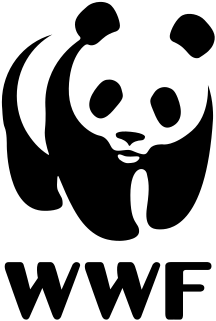 W
WThe World Wide Fund for Nature (WWF) is an international non-governmental organization founded in 1961 that works in the field of wilderness preservation and the reduction of human impact on the environment. It was formerly named the World Wildlife Fund, which remains its official name in Canada and the United States.